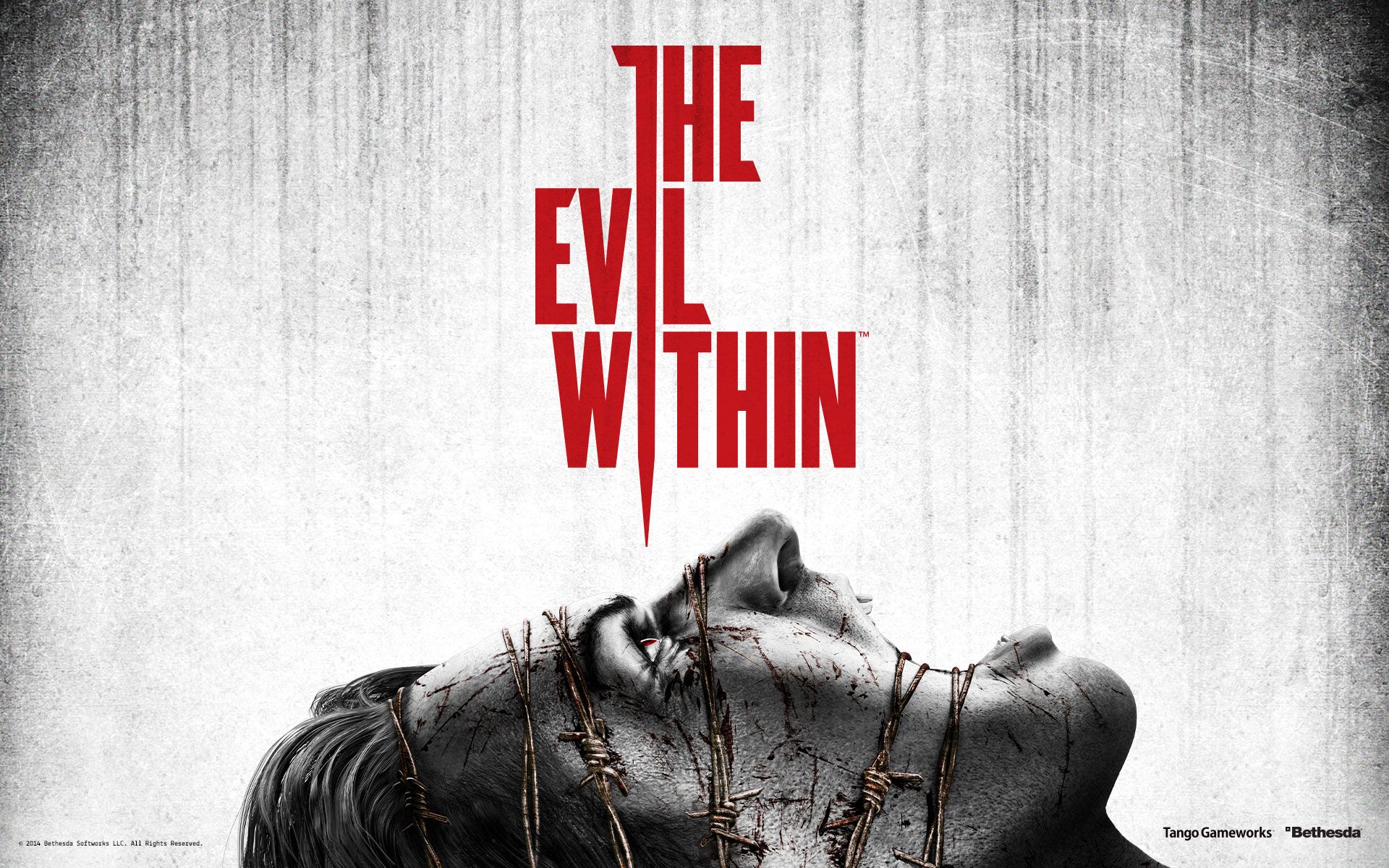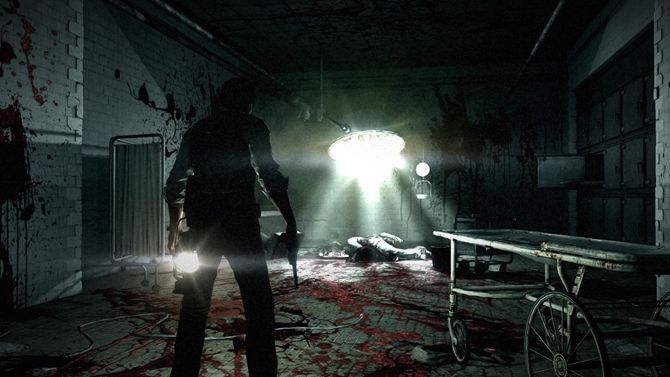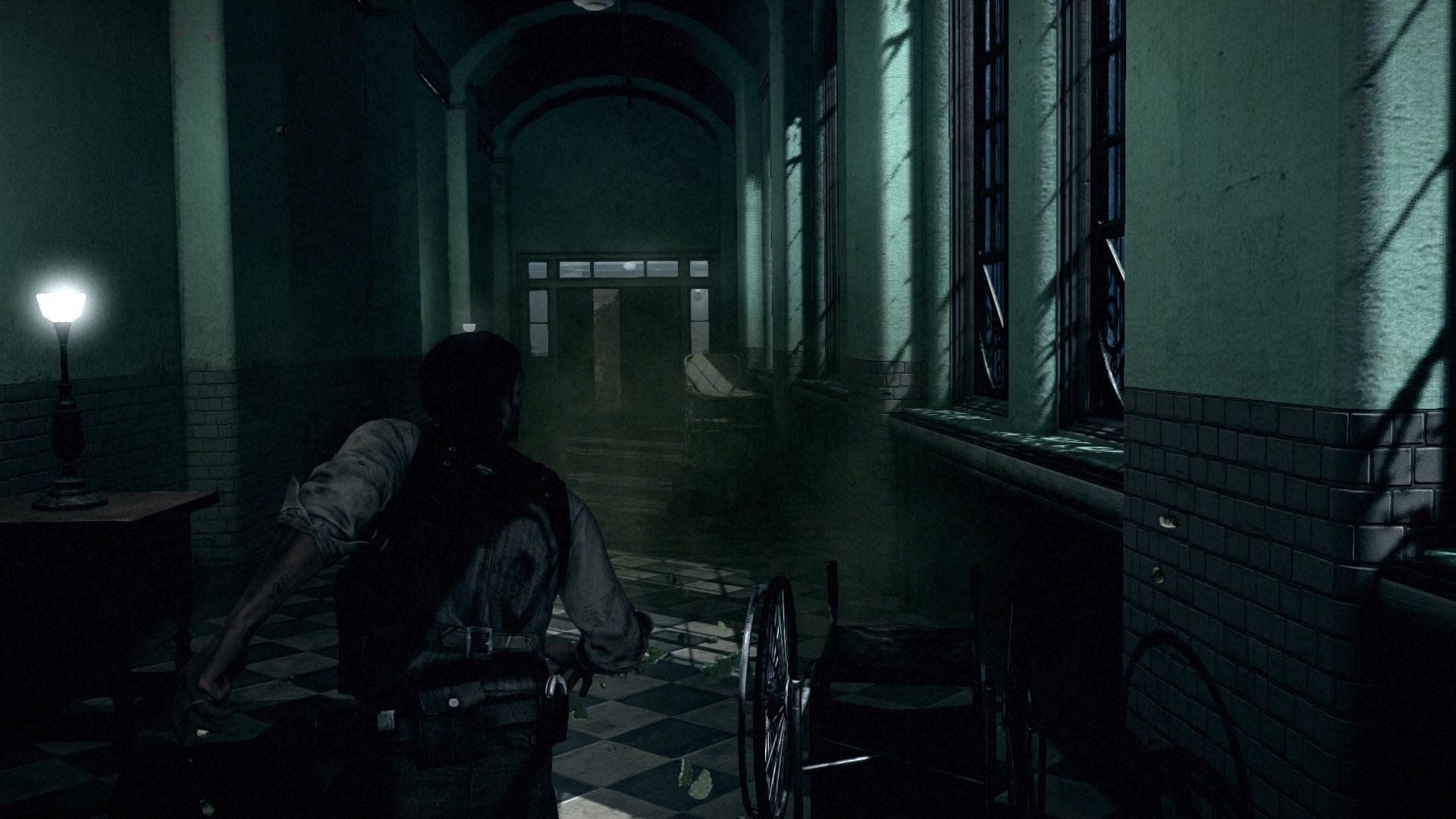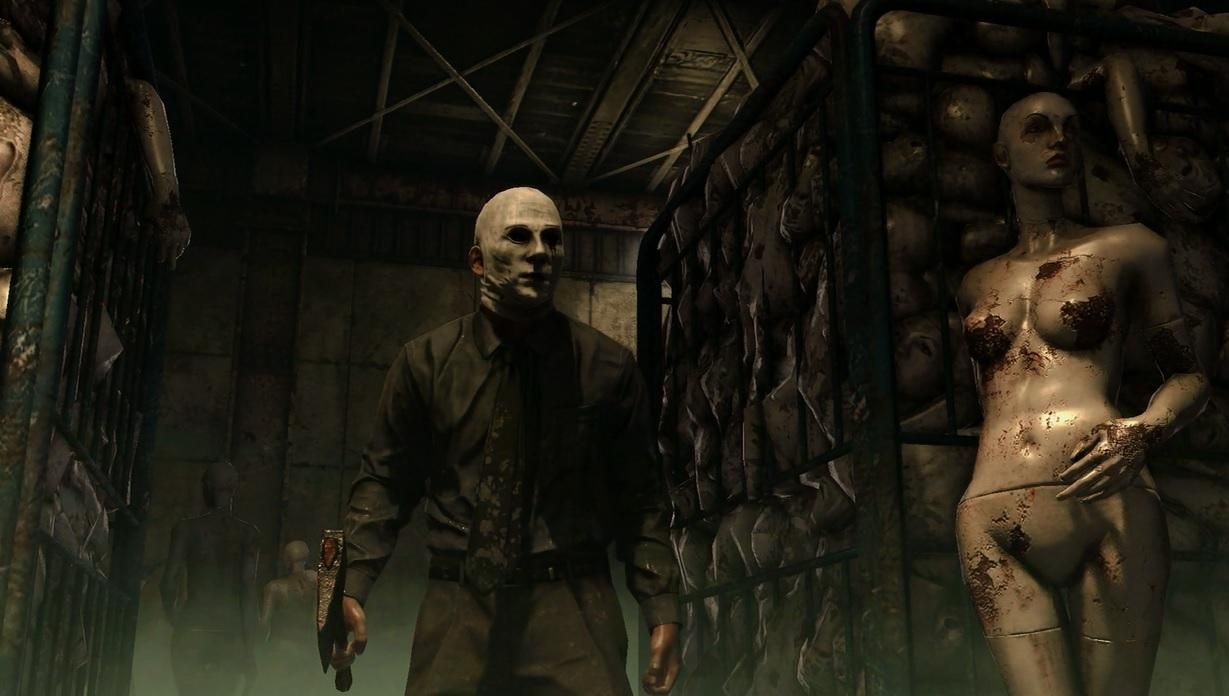There are those of us who enjoy the thrill of terror. The sudden excitement of experiencing the horror of the unexpected pushes some of us to linger through intimidating moments, waiting for the next instance of anxiety-filled consternation. As much as I loath entertaining the idea of being scared to death, there’s something about the confounding nature of horror that calls for that next glimpse of fear and seeing what’s around the corner, venturing into the eerie sounds that invade your comfort zone, or the visual dread that lies in front of you.
In some ways, The Evil Within preserves a lot of the aforementioned. It is a survival horror spawned by Resident Evil creator Shinki Mikami that intensely nourishes the word “survival,” with breviloquent moments of actual horror. The game follows Sebastian Castellanos – a veteran detective of Krimson City – who eagerly pursues the investigation of a collection of bloody murders at a local mental hospital. There is no preface to the character or his background; there is no embracing of calm. Instead, detective Costellanos, accompanied by his colleagues Joseph Oda and Julie Kidman, enter the hospital greeted by the gruesome sight of bodies that have been viciously massacred. This is, in part, how the game begins.
You get very little on the protagonist in terms of story, which is where the game itself falls a bit short. Rather, to establish a sense of character development, the player has to find in-game journals scattered throughout the game which provide a glimpse of the character’s past, leaving little to no attachment with the hero. In lieu, becoming a void of neglect that meant very little as the game’s plot unfolded.
The plot itself, unfortunately, felt as careless as Costellanos’s own advancement. With a strong start, the premise of the story arouses curiosity, enchanting you with what you hope will instill continuous momentum. Sadly, the game’s overambitious story collapses after the first few chapters in the game, suffering from acquainting an interesting narrative structure to a lack of follow-through that would have otherwise made it admirable.
However, while the story may lack some coherent framework, The Evil Within firmly executes a foundation for survival horror which brutally strokes your imagination. This is a game that does not allow you to detract from the perilous, gruesome environment you’re trapped in, embracing your attention with horrifying monsters and a chilling ambiance littered with distressing sounds.
The eerie dead, glowing eyes of the Haunted (the zombie-like creatures that you will encounter the majority of the time) fill the darkest corridors searching for you – their moans and groans suffusing your ears, overwhelming you with anxiety and dread as they slowly approach. And although hiding under beds and in closets provides a minor sense of security in concealing yourself from these beings, one can’t help but feel a paralyzing sense of trepidation as you ogle at the white, luminous eyes of the Haunted looking to butcher you.
The lighting blissfully adds to the gory and chilling surroundings, providing a naturalistic climate to the world. Ultimately, though, The Evil Within’s graphics are not defining by any means. While the lighting does add a form of dynamics to the feel of the game, the overall graphics are not exemplifying to this generation’s expectations. It’s not to say that the game is a visual disaster, because it’s not.
The grainy, grayish tones that saturates the game gives it the “gritty” look and feel that I think marries well with the experience. Where there are some monsters that look “meh” on the visual scale, you will encounter some that will undoubtedly give you a taste of terror, something only accomplished by decent visual fidelity. This goes hand in hand with the beautifully crafted textures that enhance the gory environment’s details to authenticate the game’s materiality.
Nothing, however, adds to tension in a survival horror game like well-designed sound. As mentioned above, listening to the moans and groans of passerby Haunted sent shivers down my spine as I cowered in a dark corner praying that their luminous eyes don’t meet with mine. Of course, visually noticing them is not as terrifying as walking down a hall filled with blood-spattered doors only to be accompanied by the sounds of a weary Haunted -- their breathing and cries causing me to stop in my tracks to prominently explore my surroundings to ensure they’re not in sight. It is something that I found myself doing quite a bit during my play through.
The soundtrack, which was composed by No More Heroes soundtrack composer Masafumi Takada, amalgamates with the game excellently. A good soundtrack will cooperate with a game to create an emotion. In this, The Evil Within I believe does well. During boss encounters, for example, I was able to discern how much more the music itself contributed to the distress I felt. When a game is able to successfully incorporate music and attain an emotional response, it, from an audible point of view, has performed an excellent feat. And in this, I can’t say that The Evil Within comes apart.
Traditionally, as you would expect from most decent survival horrors, this is a game that tests your ability to think critically before and/or during your encounters. Resources are limited, which means that what you use and how you use it should count for something. Every gunshot missed decreases your survivability during hostile situations, which means that you should rely on your ability to stealthy eliminate oblivious enemies from behind when you can, or just ignoring them completely if you can get past them to conserve ammo and, potentially, health.
You can use methods of distraction, such as throwing bottles, for instance, to direct their attention which may leave room for you to sneak behind and stealth-kill. But, this is a method that proves ineffective at times due to the enemy’s high sense of awareness where they ardently investigate the noise and, just as you creep behind them and are ready to perforate their skull with your knife, turn quickly to notice your presence, discarding the stealth kill and, in turn, consuming the use of resources needed to eliminate them.
Then there are traps. Traps, both environmental and those crafted, can be an essential tool for survivability as it can be used to hinder, and even eliminate, an enemy (sometimes even smaller groups). The environmental traps (e.g. bear traps, wire traps, proximity mines, etc.) can be carefully disarmed, providing you with “parts” which can be utilized in crafting bolts (traps) for your Agony Crossbow.
Of course, the thought of melee combat sounds intriguing during single encounters in order to avoid the depletion of ammo, but it is not something I always favored due to the mismatch in damage. Where a Haunted, for example, can take a plethora of melee damage, your life gauge is only capable of sustaining a handful of hits before you’re dead due to the massive damage Haunted attacks cause.
Now, this is not by any means insinuating that melee combat is not an option – it is (if you knock them down, pray you have a match to light them ablaze) if you’re a masochist or a daredevil. It just ends up being more of a suicidal effort that, in the end, is not worth the frustration. When it comes to melee encounters, I would prefer to engage a Haunted only when I have an axe or a torch at hand – single-use weapons that can be picked up to quickly kill them.
Boss battles require a bit more creativity in this game. As you face up against fifteen chapters of frightening monsters, you will learn that, while most can be killed simply using weapons, utilizing some wit will come a long way in saving your resources (if at all possible). Some, though, require dense means of elimination where you will need to use the environment to kill them – something that will leave you increasingly frustrated as you tediously die over and over in an attempt to figure out the right course of action in killing them.
While some survival horror games I’ve played in the past tend to have bulky controls when handling the characters, I found The Evil Within to have a welcoming (even adequately native after the first few minute) schema. Like more recent survival horrors, such as The Last of Us, the gameplay functions are pleasant and responsive. Top-right shoulder button to crouch; bottom-left shoulder button to aim; bottom-rightshoulder button to shoot; D-pad for quick select of weapons and health items; etc. It’s a system that has worked well and has even been applauded in other games, and it’s a system that maintains the assuasive flow in The Evil Within. My only complaint being the character’s inability to shoot (e.g. placing a trap) whilst crouching – something that negates a bit of the true stealth-like feel of other survival games, but something that doesn’t detract from the experience of this game, specifically.
The upgrade system is something we’ve all encountered in games. You obtain currency of some sort (in The Evil Within the currency is a green “brain” gel) from the environment, and you use it at a specific location, or character menu, to upgrade your character’s abilities. In this game specifically, you follow the bizarre tune of the famous classical piano song Clair de Lune by Claude Debussy that leads to a room with a mirror and a journal entry of detective Costellanos (every single one of these rooms, in my encounter, has had an entry which provides a bit of background on Costellanos).
Upon picking up the entry the mirror shatters, giving you access to the Beacon Mental Hospital, where you will consistently encounter Nurse Tatianna – an enigmatic, ghostly character with virtually no emotion (you find out later what happened to the character). The mental hospital, and its monochrome colors, contains a chair that allows detective Costellanos to sit in and use the green gel to spend on ability upgrades (health, melee damage, sprint time, etc.), weapon upgrades (clip capacity, reload time, damage output, etc.), agony bolt upgrades (number of bolts increase, etc.) and stock upgrades (increase the number of things you can carry such as matches, grenades, handgun ammo, etc).
After each upgrade, the amount of green gel that is needed for the next level is increased. Additionally, this instance of the hospital also serves as a place to save your game and as an area where you use keys found in statues you break throughout the game to open locked morgue doors to obtain additional items such as ammo and green gel. It’s a place that adds a moment of serenity, if even brief, amongst the grotesque, horrifying world that you will eventually head back into.
The Evil Within isn’t a scary game in the sense that it continuously leaves you looking over your shoulder or in the darkest corners of your room for something to jump out. It is suspenseful and it does create a chilling atmosphere that will undeniably introduce moments of sheer tension. What the game does well in the survival horror aspect is that it truly instills the survival instinct in how you tactfully approach situations and deal with them, having a large emphasis on patience and stealth and heavily delving into how you employ the scarce materials and resources you come across.
The horror blends with the survivability of the game by instituting a platform of terror in encountering the unknown – of stepping into an unfamiliar world with unfamiliar creatures whose sole purpose is to rip you apart. Creatures with dead, gleaming eyes that look to be something out of a nightmare. The thought of engaging a mob nightmarish creatures with nothing but your lantern, your knife, and five bullets is a frightening scenario, and that is where I feel the game competently exercises the emotion of fear.
Although the plot isn’t its strongest point, The Evil Within is a game that has few instances in where it egregiously suffers. It isn’t a perfect game by any means, but it isn’t calamitous either. It is a game that challenges your ingenuity and patience by fairing you against improbable odds that actually requires a level head and dexterity to alleviate, all while offering a sincerely enjoyable, and sometimes uneasy, time. For newcomers of the genre, this will no doubt secure many moments of resentment, but veterans of the genre will welcome it with open arms.
While this may not be the scariest game you will have played, it will probably be up there in terms of suspense as it definitely provides an ample amount of it throughout its entire play through. It is a game with evident flaws, but not enough of them that it will deprive you of the solid, survival horror-filled entertainment.
Statement: DualShockers recently published a review for The Evil Within which the senior editorial team felt was not to the standard of the publication due to lack of depth and quality in the review process and in the writing. That resulted in the difficult decision to retract the original review. We would like to earnestly extend our sincerest apologies to our readers for the lack of foresight on our end and, most importantly, for publishing – what we felt – was an incomplete review. This new review, written directly by our Editor in Chief, who has a large experience with the survival horror genre, better fits our quality standards, and we feel it ultimately better serves our readers. For the sake of transparency, the original review is still available here, to allow you, the reader, to judge on your own.
The Evil Within
- Released
- October 14, 2014
- Developer(s)
- Tango Gameworks
- Publisher(s)
- Bethesda
- Genre(s)
- Third-Person Shooter , Survival Horror
- ESRB
- M for Mature: Blood and Gore, Intense Violence, Strong Language





